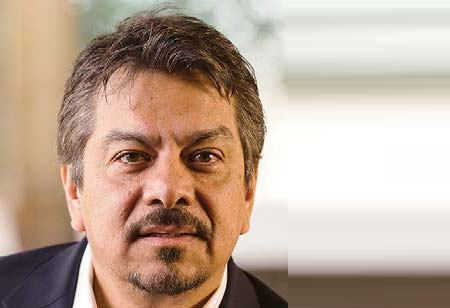

Thank you for Subscribing to Cannabis Business Insights Weekly Brief

Before we jump in and talk more about the food and beverage tech space, can you talk to me a little bit about yourself and your journey in the F&B sector?
Academically, my background is in microbiology, chemistry and languages; and professionally, I have worked in different roles in the food safety industry. I started as a regulator in the Health Department and then worked for the Educational Foundation of National Restaurant Association and one of the largest food distributors in the U.S. My role throughout has been to ensure food safety and quality. Eventually, I joined Wendy's as the VP of quality assurance. I'm now in charge of ensuring that the products our customers purchase meet our food safety and quality standards —all the way from the farm, throughout the supply chain, and to all of our restaurants around the globe. From your experience, how would you say that the food and beverage industry has evolved through the years? What would you say are some of the challenges you see in this space and the trends driving those challenges? The food industry continues to evolve all the time. However, the pace of evolution seems to have accelerated over the last 20 years. There are a lot of advanced technology tools available in the market, which has sped up the evolution exponentially. For the F&B industry to stay relevant and stay on top of emerging technologies, we need to make sure that we keep those things in mind as we develop and evolve food safety and quality programs along with new processes, tools and systems. A use case would be how we use blockchain technology at Wendy's to increase the traceability of applewood smoked bacon. Another example I can give you that we're very excited about is our technology portal, where we actually track data from different parts of a product's journey through the supply chain, from the supplier to the consumer. We use this data to make better business decisions, including safety and quality. We are also running a pilot project with TeamViewer, an AR/VR technology company that uses Google glasses. This technology gives us remote access at food safety and quality practices in the field, at manufacturing plants, and distribution centers. And truth be told, this is just scratching the surface of how technology can help the F&B sector. We need to understand that the F&B space has continued to be flexible enough to adapt cutting-edge technology to solve its inherent problems. Some segments are very willing and able to adapt to the use of data to become trendsetters and be more proactive in predicting issues before they happen. However, some players in the F&B industry are still very early in their journey, and they're falling a little bit behind in taking advantage of the innovative technologies available to us. "The potential of a technological revolution in the F&B sector is imminent as every piece of modern technology can be used in some context or the other" An example in the F&B is virtual, or ghost kitchens, a business model that can be defined as a restaurant, or several restaurants, preparing food in a common area with no dining room and only for consumption off the premises. This model is highly efficient, as space, equipment and, often ingredients and people are shared, and it grew significantly during the pandemic. Ghost kitchens take advantage of remote ordering, back-of-house platforms to store and prepare the food efficiently, delivery technologies and data-driven marketing and merchandising. These businesses have been flourishing in a number of locations, but in others have met with regulatory challenges. When it comes to food safety, one of the things that we have learned is it's important to develop the right food safety management system for the location and the business model. For ghost kitchens, there are many different models and ways to ensure the safety of the food. However, the business model and use of technology is a gray area in the regulatory community, and that has led to confusion. To alleviate this challenge, I believe that regulatory bodies should consider updating regulatory interpretations to provide the flexibility needed align with the use of technology and these up-and-coming business models. What are some of the technologies that are being used in the current F&B space? One of the prime concerns in the F&B industry is the lack of visibility in different growing and production processes. As a result, different types of sensors, data collection tools, and traceability technology-driven solutions are on everyone's mind. We are also seeing the development of many advanced algorithms that can use the data provided by the tools and help drive enterprise level decisions on safety, quality, consistency, waste, cost and many other important business parameters. That being said, the potential of a technological revolution in the F&B sector is imminent as every piece of modern technology can be used in some context or the other — to improve the overall workflow of the F&B arena. Finally, what would be your piece of advice to the budding CXOs in the space? When undertaking a digital transformation project, be patient and take the time to explain the basics to your teammates. Also, make sure to take the time and ensure that your teammates understand the different risks associated with the products they are working on, especially if they are working in a collaborative setting. So they need to have the proper controls in the right breakout points to maintain the safety and the quality of the F&B products in bulk. Only then can we ensure a safer future for generations to come.I agree We use cookies on this website to enhance your user experience. By clicking any link on this page you are giving your consent for us to set cookies. More info